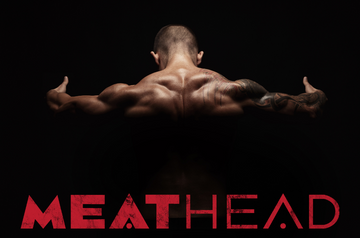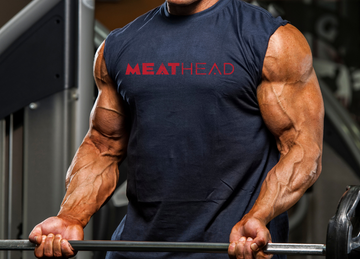Building muscle after 40 isn't for the faint of heart. If you're a man in your 40s and you're ready to bulk up, this means grinding through smart, intense workouts, adjusting your nutrition, and mastering the art of recovery. Your body doesn’t recover as fast as it did in your 20s, but that doesn’t mean it’s time to back down—it just means it’s time to train smarter. Let’s dive into the key elements for bulking up post-40.
1. Prioritize Strength Over Volume
At this stage in life, your muscle fibers respond best to heavy resistance. That means you should focus on compound, multi-joint movements that allow you to move serious weight. Forget the “pump” you chased in your younger years—this is about stimulating muscle fibers in a way that forces them to grow.
Key Exercises:
- Squats: The king of lower-body lifts, squats work almost every muscle in your legs and core. Load up heavy, aiming for 3-5 sets of 4-6 reps.
- Deadlifts: These build total-body strength while targeting your posterior chain—critical for a strong back, glutes, and hamstrings.
- Bench Press: Go heavy with the bench press to build your chest, shoulders, and triceps.
- Rows (Barbell or Dumbbell): These are key for upper-back thickness, which helps your posture and adds size.
- Overhead Press: Strong shoulders are vital for bulking up. Keep it strict and work up to heavy sets.
Pro Tip: Focus on progressive overload—gradually increasing the weight you lift over time to keep pushing your muscles to adapt.
2. Don’t Shy Away From Isolation Work
While compound movements should be the foundation of your routine, isolation exercises help bring up weak points and add muscle symmetry. However, don’t waste time with endless sets. Keep it efficient.
Key Isolation Exercises:
- Bicep Curls: Focus on full contraction, going heavy with good form.
- Tricep Pushdowns: Hit those triceps hard to complement your chest and shoulder work.
- Lateral Raises: These add width to your shoulders, giving you that sought-after V-taper.
- Leg Curls/Extensions: These isolation exercises will hammer your quads and hamstrings to complement your heavy squats and deadlifts.
3. Adjust Volume and Frequency
You may not recover as fast as you did at 25, but your body can still handle a lot of work if you structure your training correctly. Stick to 3-4 days a week of heavy lifting, allowing 48-72 hours between training the same muscle group. For most men over 40, a 4-day split works best. Here's an example:
Sample Split:
- Day 1: Upper Body Push (Chest, Shoulders, Triceps)
- Day 2: Lower Body Pull (Deadlifts, Hamstrings, Glutes)
- Day 3: Upper Body Pull (Back, Biceps)
- Day 4: Lower Body Push (Squats, Quads, Glutes)
This split allows for proper recovery between major muscle groups while still keeping you in the gym frequently enough to build muscle.
4. Warm-Up Properly and Prioritize Mobility
Mobility isn’t optional when you're 40 and over—it's critical for longevity and staying injury-free. Start every workout with 10-15 minutes of dynamic stretching and mobility work. Focus on areas that tend to get tight with age: hips, shoulders, and hamstrings.
Key Mobility Drills:
- Hip Flexor Stretches: Helps with squatting and deadlifting without lower-back strain.
- Thoracic Spine Mobility Work: Loosens up your upper back, preventing stiffness and improving overhead lifts.
- Shoulder Dislocations: Keeps your shoulders healthy, especially with heavy pressing movements.
Don’t skimp here—if you want to keep lifting heavy for years to come, mobility work will be your best friend.
5. Dial in Nutrition for Gains
Building muscle at any age requires proper nutrition, but as you get older, your metabolism slows, and muscle protein synthesis isn’t as efficient. You must be diligent with your diet if you want to bulk up. Focus on these key factors:
- Protein Intake: Aim for at least 1g of protein per pound of bodyweight daily. This ensures your muscles have the raw materials they need to grow.
- Carbohydrates: You need energy to train hard, especially when lifting heavy. Stick to complex carbs like oats, sweet potatoes, and brown rice to fuel your workouts and recovery.
- Healthy Fats: Fats are essential for hormone production, especially testosterone, which plays a huge role in muscle growth.
- Caloric Surplus: To bulk up, you need to eat more calories than you burn. Keep it clean—don't rely on junk food—but don't be afraid to eat a lot.
6. Don’t Skip Recovery
Recovery is just as important as training. If you’re not recovering well, you won’t grow. At 40, your recovery process is slower, so you need to give it more attention.
- Sleep: Prioritize getting at least 7-8 hours of sleep per night. This is when your body repairs and grows muscle tissue.
- Active Recovery: Light activity on rest days (walking, swimming, stretching) helps circulation and muscle repair without taxing your body.
- Supplements: Consider adding creatine, whey protein, and omega-3s to your diet to aid recovery and enhance muscle-building.
Final Thoughts: Mental Toughness Over 40
Bulking up over 40 isn’t just about pushing weights—it’s about mental toughness. Your body will need more time to recover, you’ll need to stay more disciplined with nutrition, and you’ll have to listen to your body more carefully. But, if you stay consistent, train hard, and respect the process, you can pack on muscle and defy age.
Stay in it for the long haul—because at 40, we don’t quit, we adapt and come back stronger.





